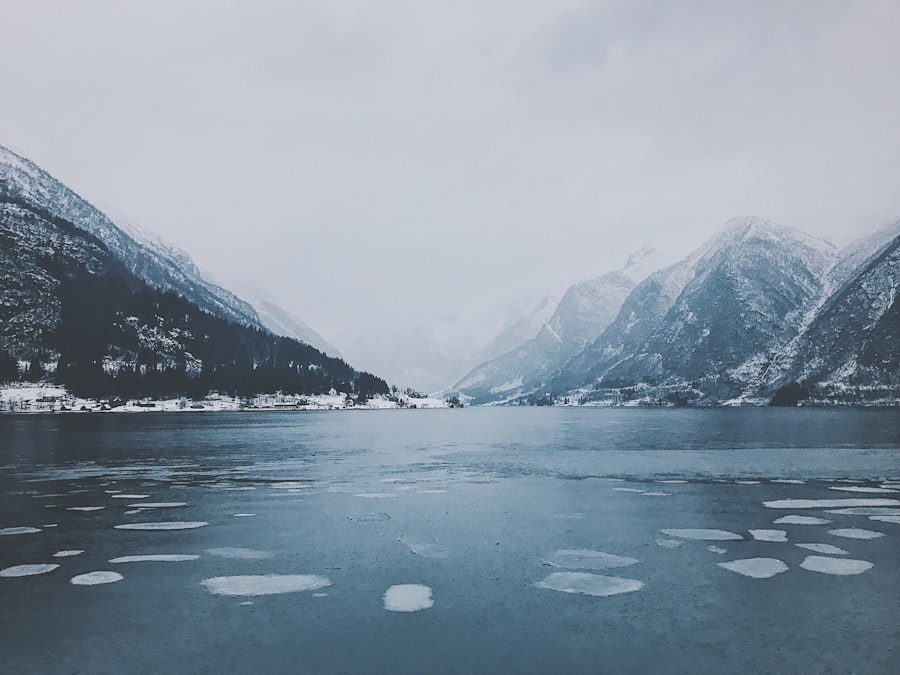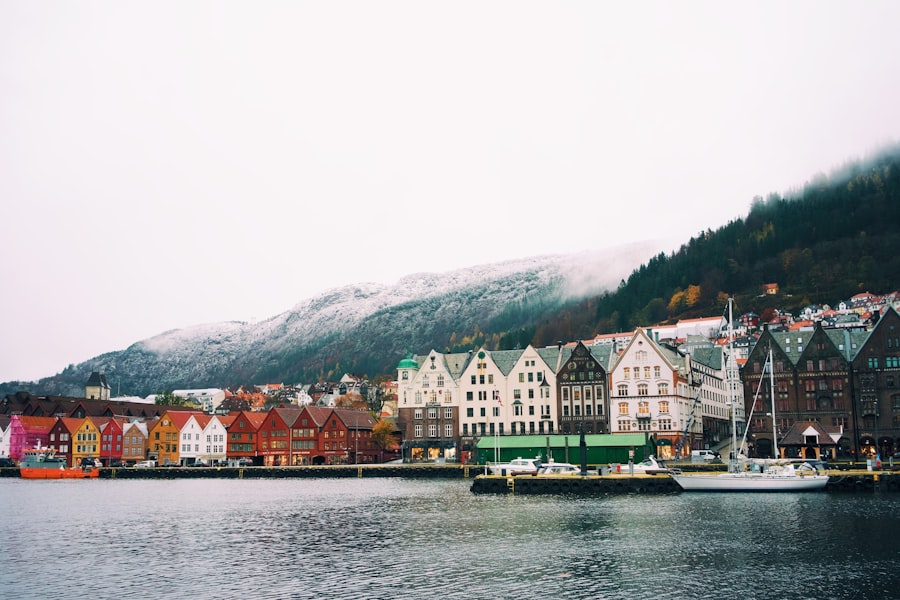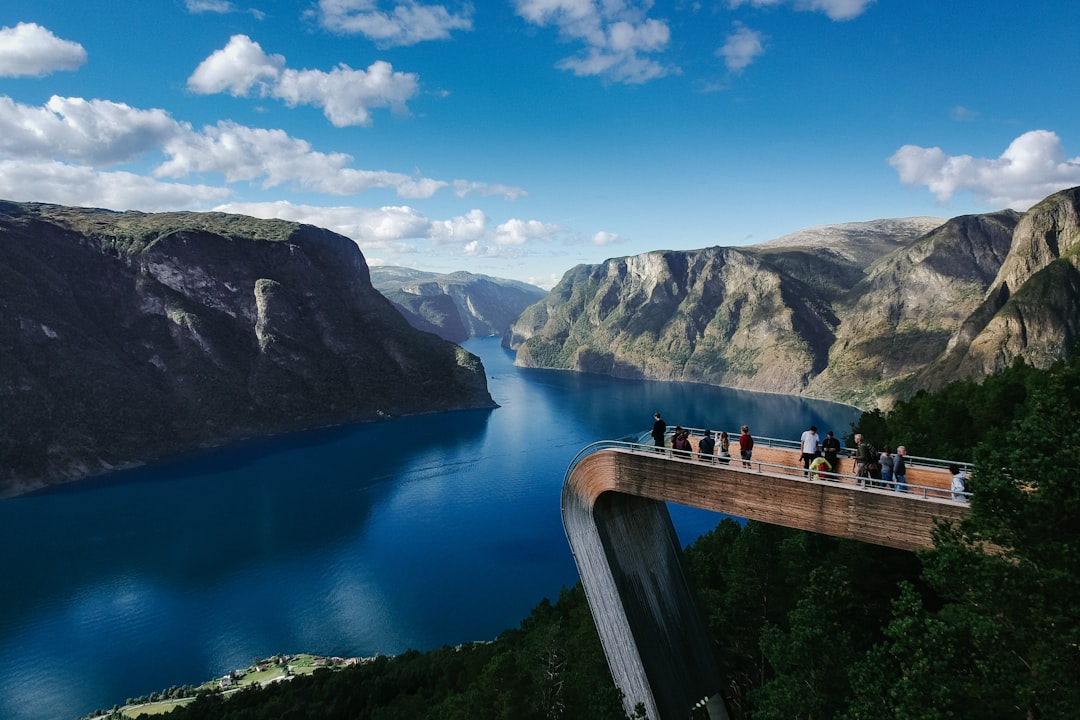Winter cycling in Norway is an exhilarating experience that combines the beauty of the snowy landscape with the thrill of riding through crisp, cold air. As the days grow shorter and the temperatures drop, many Norwegians embrace the winter months by taking to their bicycles, transforming what might seem like a daunting task into a joyful adventure. The country’s commitment to cycling as a sustainable mode of transport means that even in winter, cyclists can find well-maintained paths and a supportive community.
The allure of winter cycling lies not only in the stunning scenery but also in the unique challenges it presents. Riding through snow-covered streets and navigating icy paths requires a different set of skills and equipment compared to summer cycling. However, with the right preparation and mindset, winter cycling can be a rewarding way to stay active during the colder months while enjoying Norway’s breathtaking winter landscapes. Book your 1-hour strategy session with Norway Relocation Group.
Summary
- Winter cycling in Norway offers a unique and exhilarating experience for cyclists of all levels.
- Essential winter cycling gear includes studded tires, warm clothing, waterproof outer layers, and lights for visibility.
- Safety tips for winter cycling in Norway include staying visible, riding cautiously, and being prepared for changing weather conditions.
- Choosing the right bike for winter cycling involves considering factors such as tire width, frame material, and disc brakes for better traction.
- Preparing your bike for winter conditions includes regular maintenance, lubricating moving parts, and protecting the frame from salt and snow.
Essential Winter Cycling Gear
To fully enjoy winter cycling, investing in the right gear is essential. The first item on any winter cyclist’s list should be a good quality helmet, as safety remains paramount regardless of the season. In addition to a helmet, wearing layers is crucial; thermal base layers, insulating mid-layers, and waterproof outer layers will help regulate body temperature while keeping you dry from both sweat and external moisture.
Gloves are another vital component; insulated, waterproof gloves will keep your hands warm and functional, allowing for better control of the bike. Footwear is equally important when cycling in winter conditions. Insulated, waterproof shoes or boots paired with thick, moisture-wicking socks will help keep your feet warm and dry.
Additionally, consider using clipless pedals or toe clips to ensure your feet remain securely attached to the bike, providing better control on slippery surfaces. Finally, investing in high-visibility clothing and accessories such as reflective vests or lights will enhance your visibility during the shorter daylight hours, ensuring you are seen by other road users.
Safety Tips for Winter Cycling

Safety should always be a top priority when cycling in winter conditions. One of the most important tips is to adjust your riding style to accommodate for slippery surfaces. This means reducing your speed, maintaining a greater distance from other vehicles and cyclists, and being particularly cautious when approaching corners or intersections where ice may be present.
It’s also wise to avoid sudden movements; gentle steering and braking will help maintain balance and control. Another key safety measure is to stay informed about weather conditions before heading out. Checking forecasts for snow or ice can help you plan your route accordingly.
If conditions are particularly treacherous, it may be best to postpone your ride or opt for a more sheltered route. Additionally, always carry a mobile phone in case of emergencies, and consider informing someone of your planned route and expected return time.
Choosing the Right Bike for Winter Cycling
Selecting the appropriate bike for winter cycling can significantly enhance your experience. While many cyclists may choose to use their regular bikes year-round, investing in a winter-specific bike can make a noticeable difference. Fat bikes, for instance, are designed with wider tyres that provide better traction on snow and ice, making them an excellent choice for winter conditions.
These bikes are built to handle rough terrain while offering stability and control. If a fat bike isn’t feasible, consider equipping your regular bike with winter tyres that feature spikes or deeper treads for improved grip on icy surfaces. Additionally, ensuring that your bike has proper fenders can help keep you dry from slush and snow kicked up from the road.
Ultimately, the right bike will depend on your personal preferences and the specific winter conditions you expect to encounter.
Preparing Your Bike for Winter Conditions
Proper maintenance of your bike is crucial during the winter months to ensure it remains in good working order. Start by cleaning your bike thoroughly to remove any dirt or grime that may have accumulated during previous rides. Pay special attention to the drivetrain components, as they can become clogged with salt and debris from the roads.
Regularly lubricating the chain and other moving parts will help prevent rust and ensure smooth operation. In addition to cleaning and lubrication, consider making adjustments to your bike’s components for winter riding. Lowering tyre pressure slightly can increase traction on slippery surfaces, while ensuring that brakes are functioning optimally is essential for safe stopping power in icy conditions.
Finally, check your lights and reflectors to ensure they are working properly; visibility is key during the darker winter months.
Navigating Snow and Ice on Winter Cycling Routes

Navigating snow and ice while cycling requires a different approach than riding on dry pavement. When faced with snow-covered paths, it’s important to maintain a steady pace; sudden accelerations or braking can lead to loss of control. Leaning slightly back while pedalling can help distribute weight more evenly over the bike, improving balance on slippery surfaces.
When encountering icy patches, it’s best to avoid them if possible; however, if you must ride over them, do so with caution. Keep your body relaxed and steer straight without making abrupt movements. If you find yourself skidding, try to steer into the skid rather than against it; this can help regain control more effectively.
Practising these techniques in a safe environment can build confidence before tackling more challenging routes.
Understanding Winter Cycling Etiquette in Norway
In Norway, cycling etiquette is taken seriously, even during the winter months. Cyclists are expected to follow the same rules of the road as other vehicles, which includes obeying traffic signals and yielding to pedestrians at crossings. It’s also important to signal your intentions clearly when turning or changing lanes; this helps ensure that both motorists and fellow cyclists are aware of your movements.
Additionally, being courteous to other road users is essential during winter cycling. If you encounter pedestrians or other cyclists on narrow paths, it’s polite to slow down and give them space to pass safely. When riding in groups, maintain a single file line where possible to avoid obstructing traffic.
By adhering to these etiquette guidelines, cyclists contribute to a safer and more enjoyable environment for everyone on the road.
Staying Warm and Dry on Winter Cycling Trips
Staying warm and dry during winter cycling trips is vital for both comfort and safety. As mentioned earlier, layering is key; however, it’s also important to choose materials wisely. Opt for moisture-wicking fabrics that draw sweat away from the body while providing insulation against the cold.
Avoid cotton as it retains moisture and can lead to chilling once you start sweating. In addition to clothing choices, consider using accessories such as neck gaiters or balaclavas to protect exposed skin from biting winds. Investing in quality thermal socks and shoe covers can also make a significant difference in keeping extremities warm during long rides.
Remember that staying hydrated is just as important in winter as it is in summer; even if you don’t feel thirsty, drink water regularly to maintain energy levels.
Finding Winter Cycling Routes in Norway
Norway boasts an extensive network of cycling routes that remain accessible even during winter months. Many cities have dedicated winter cycling paths that are cleared of snow regularly, making them safe for cyclists. Researching local cycling maps or apps can help identify these routes before heading out on your ride.
In addition to urban paths, Norway’s stunning natural landscapes offer numerous opportunities for off-road winter cycling adventures. National parks and nature reserves often have trails suitable for fat biking or mountain biking in winter conditions. Joining local cycling clubs or online forums can provide valuable insights into popular routes and hidden gems known only to seasoned cyclists.
Joining Winter Cycling Groups and Events
One of the best ways to enhance your winter cycling experience is by joining local groups or participating in events dedicated to this activity. Many cities in Norway host organised winter rides or races that cater to cyclists of all skill levels. These events not only provide an opportunity to meet fellow enthusiasts but also foster a sense of community among cyclists who share a passion for riding through winter landscapes.
Participating in group rides can also offer safety in numbers; riding with others can boost confidence when navigating challenging conditions while providing support if any issues arise during the journey. Additionally, many groups organise social events or workshops focused on winter cycling skills and maintenance tips, further enriching your experience.
Embracing the Winter Cycling Experience in Norway
Embracing winter cycling in Norway means immersing yourself in a unique blend of adventure and community spirit. The thrill of gliding through snow-covered streets while surrounded by stunning fjords or majestic mountains creates an unparalleled connection with nature that few other activities can offer. As you navigate through this beautiful landscape, you’ll discover not only the joy of cycling but also the camaraderie that comes from sharing this experience with others.
For those looking to deepen their understanding of Norwegian culture while enhancing their language skills, consider enrolling in Norwegian courses at the NLS Norwegian Language School in Oslo. These courses provide an excellent opportunity not only to learn the language but also to connect with fellow cyclists who share similar interests in exploring Norway’s winter wonderland on two wheels. By combining language learning with your passion for cycling, you’ll enrich both your cultural experience and your ability to communicate with locals as you embark on your winter adventures across this beautiful country.
Speak Norwegian with confidence. Enroll in a class at the NLS Norwegian Language School now.

